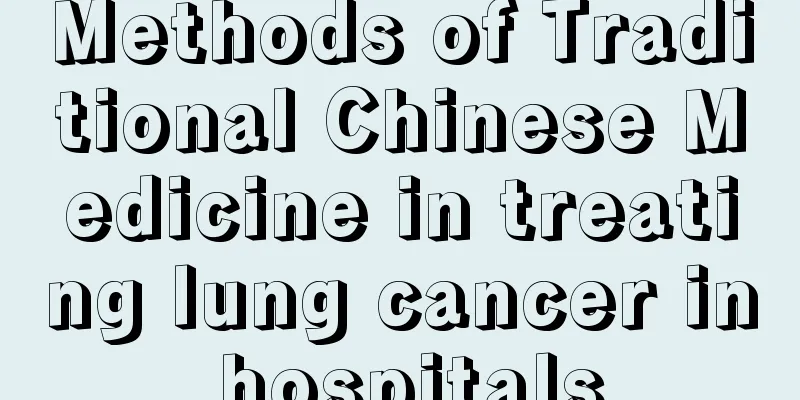Methods of Traditional Chinese Medicine in treating lung cancer in hospitals

|
Most primary malignant tumors of the lung originate from the bronchial mucosal epithelium, so it is also called bronchial lung cancer. According to the type, TCM treatment of lung cancer can be divided into phlegm and dampness in the lung, blood stasis, qi and yin deficiency, yin deficiency and toxic heat, etc. The methods of TCM treatment of lung cancer in hospitals are introduced as follows: 1. Traditional Chinese Medicine Treatment of Lung Cancer Phlegm and Dampness in the Lungs Symptoms: cough, sputum, shortness of breath, thick and sticky sputum, white sputum or a mixture of yellow and white sputum, chest tightness and pain, poor appetite and loose bowel movements, fatigue, dark tongue, white and yellow greasy or thick and greasy yellow tongue coating, and a wiry and slippery pulse. Treatment method: Promote qi and eliminate phlegm, strengthen the spleen and dry dampness. Prescription: Erchen Decoction combined with Trichosanthes, Xiebai and Banxia Decoction. Erchen Decoction regulates qi, dries dampness and resolves phlegm, and combined with Trichosanthes, Xiebai and Banxia Decoction, it helps to promote qi and eliminate phlegm, relieve chest tightness and resolve stagnation. If the patient has chest tightness, wheezing and coughing, Tingli Dazao Xiefei Decoction can be used to drain the lungs and promote water circulation; If phlegm stagnation turns into heat, and the phlegm is yellow, thick, and difficult to discharge, add sea clam shells, houttuynia cordata, golden buckwheat root, and scutellaria baicalensis to clear and dissipate phlegm and heat; For patients with severe chest pain and obvious signs of blood stasis, add Curcuma aromatica, Chuanxiong, and Corydalis to remove blood stasis and relieve pain; for patients with fatigue and poor appetite, add Codonopsis pilosula, Atractylodes macrocephala, and Chicken Gizzard Stone to strengthen the spleen and aid digestion. 2. TCM treatment of lung cancer with qi and blood stasis Symptoms: Intractable cough, chest tightness and shortness of breath, local chest pain like a needle or a thorn, or dark red sputum and blood, dark purple lips, dark tongue or ecchymosis, thin tongue coating, thin and stringy or fine and astringent pulse. Treatment method: Promote blood circulation and dissipate blood stasis, promote qi circulation and resolve stagnation. Prescription: Taohong Siwu Decoction with added ingredients. This prescription uses Siwu Decoction to regulate blood and remove blood stasis, and combines peach kernel, safflower, moutan bark, cyperus rotundus, and Corydalis yanhusuo to dredge meridians, activate blood circulation, promote qi flow, and relieve pain. If hemoptysis recurs and the blood is dark red, add pollen, lotus root, agrimony, Panax notoginseng, and madder root to dispel blood stasis and stop bleeding; If stasis turns into heat, and qi and body fluid are damaged, and the patient has dryness of the tongue, add Adenophora, Radix Trichosanthis, Radix Rehmanniae, Scrophulariae, Rhizoma Anemarrhenae, etc. to clear away heat, nourish yin and promote body fluid production; For those who have poor appetite, fatigue and shortness of breath, add Astragalus, Codonopsis and Atractylodes to replenish qi and strengthen the spleen. 3. TCM treatment of lung cancer with deficiency of both Qi and Yin Symptoms: Cough with little sputum, or thin and sticky sputum, low and weak cough, shortness of breath, fatigue, pale complexion, thin body, aversion to wind, spontaneous sweating or night sweats, dry mouth and lack of drinking, red or pale tongue, and weak pulse. Treatment method: Invigorate Qi and nourish Yin. Prescription: Shengmai Yin. This prescription uses Codonopsis pilosula to nourish the lung qi, Ophiopogon japonicus to nourish yin and produce body fluid, and Schisandra chinensis to nourish the lung fluid. The three herbs are used together to nourish qi, yin and produce body fluid. For patients with obvious symptoms of qi deficiency in lung cancer, add raw astragalus, Pseudostellaria baicalensis, Atractylodes macrocephala, etc. to nourish qi, invigorate the lungs and strengthen the spleen; for patients with more yin deficiency, add Adenophora acuta, Asparagus cochinchinensis, Scrophularia ningpoensis, Lilium bulbous, etc. to nourish yin and increase fluid; If expectoration is difficult and the sputum is small and sticky, add Fritillaria, Trichosanthes, Apricot Kernel, etc. to clear the lungs and resolve phlegm. If the lungs and kidneys are both affected, and the yin damages the yang, resulting in yang deficiency, add Curculigo, Epimedium, Morinda, Cistanche, Psoralea corylifolia, etc. to warm and nourish the kidney yang. Traditional Chinese medicine treats lung cancer from the perspective of blood stasis and edema. Promoting blood circulation to remove blood stasis, promoting diuresis and reducing edema can provide relief for some patients. Commonly used prescriptions include Tongqiao Huoxue Decoction, Wuling Powder, Wupi Yin, Zhenwu Decoction, etc. For those with mild compression symptoms, you can add herbs such as scutellaria baicalensis, Poria cocos, raw ephedra, and motherwort to the prescriptions for treatment to clear the lungs, remove congestion, and promote blood circulation and diuresis. Among the above symptoms, if there is also superior vena cava compression syndrome, cyanosis and watery discharge on the face and upper chest |
<<: How to check lung cancer at the hospital
>>: Costs associated with chemotherapy for lung cancer
Recommend
Will washing your face with white vinegar make it whiter?
Washing your face is very important for skin cond...
Ultrasound findings of gallbladder cancer
Ultrasound findings of gallbladder cancer include...
What's the matter with thin legs and fat upper body
Thin legs and a fat upper body may be caused by s...
What are the symptoms of obsessive-compulsive thinking
At present, many people in society have obsessive...
How to check liver problems
The liver is a particularly important organ in th...
What are some tips for life
In fact, we often encounter some difficulties in ...
The efficacy and function of thorn tea
There are so many different kinds of tea in China...
How much does lung cancer surgery cost? It’s different for everyone
Lung cancer is a very common tumor disease in cli...
Will bladder cancer intravenous chemotherapy cause hair loss?
Bladder cancer is the most common malignant tumor...
Can ginger soaked in vinegar cure bone spurs?
In real life, bone spurs are a very common bone d...
The best doctor is yourself! Only 3% of the world's population knows about it.
1. When it comes to health, you are more effectiv...
Why do my eyelids keep twitching
Everyone knows that eyelid twitching is a helples...
What are the dietary precautions for lung cancer patients? Revealing the dietary precautions for lung cancer
There is no systematic treatment method for cance...
What are the causes and symptoms of headaches?
There are many diseases in people's bodies, w...
Patients with cervical cancer should take good care of themselves before treatment
Cervical cancer is the most common malignant tumo...









